Interview with Chef John Fleer – Canyon Kitchen in Cashiers, North Carolina
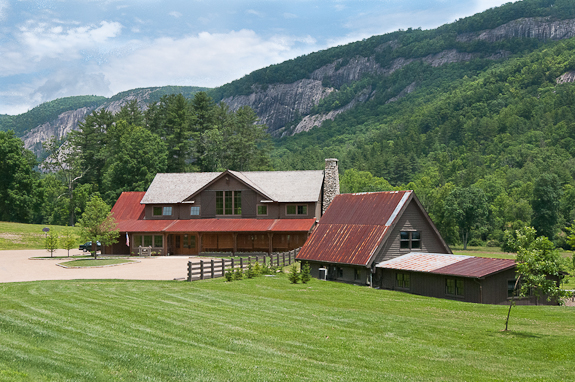
What is his advice for someone interested in becoming a chef? He gets asked that question often. His number one piece of advice is to work in the business for at least a year, especially for a young person or even someone changing careers. He said that it is not glorious in the kitchen and you will not end up on the Food Network! “It is not all about beautiful, locally grown wild mushrooms in a hot saute pan.” (Of course, I can relate to the reality of that situation after having a dinner party!) He adds, to be successful, you need perseverance and luck, as you do with anything.
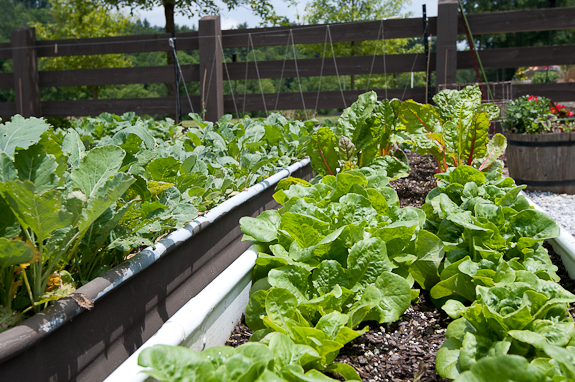
When I asked Chef Fleer what chefs he admires or finds interesting, he said the two chefs that fascinate him right now are Victor Arguinzoniz of Etxebarri, which is outside of Bilbao, Spain and Francis Mallmann from Buenos Aires. Both of these chefs use the element of fire in their cooking.
Victor Arguinzoniz has a small restaurant with a tiny kitchen in the Basque Country of Spain and is a grill master of Basque cooking. He makes his own charcoal and pieces of equipment to cook with and has a very precise grilling method. Victor has a bank of grills and feeds them new charcoal for each dish. Pots are placed on a pulley and he adjusts each piece individually. This incredibly simple method of cooking maximizes the flavors of the ingredients by applying fire to them. However, Fleer says it is not smokey like a barbecue.

Francis Mallmann, author of the book, Seven Fires, uses the seven traditional fire methods based on cooking techniques that originated in South America. One of these is “little hell”, where the charcoal is placed on a platform on the bottom, similar to a Chinese barbecue box. Another technique is to string whole meat up over the fire. Food is also buried in ashes.
Both of these chef’s cooking methods are about the food and the fire and the seasoning is minimal. Chef Fleer says that it pulls back on the creativity and focuses on the ingredients and the heat and he is fascinated with this. Will we be seeing this at Canyon Kitchen in the future? Fleer says he “sees it in his mind all the time”, but certainly would like to do one small project incorporating this method of cooking on the menu.
When asked about how the chefs in the South are recognized in comparison to other parts of the country, Fleer said that Southern chefs are beginning to get their due and they certainly have deserved it for a long time. He was very happy to see two of his good friends (Linton Hopkins and John Currence) included in the event at the White House several weeks ago, which was part of the anti-obesity campaign in our schools that Michelle Obama is working on.
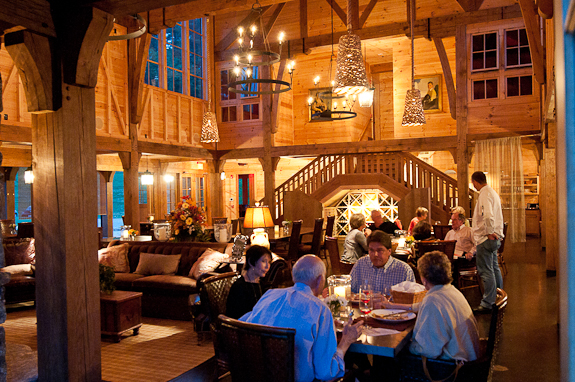
While we were finishing up our discussion, I told Chef Fleer about the series of posts I have been working on for the Highlands-Cashiers plateau and mentioned The Lick Log Mill Store and how we had driven past this wonderful little store for ten years and never stopped in. (I have spoken to so many people who have read that article and say that it made them want to go and visit the Lick Log Mill Store and many of them already have.)
Fleer said that this is the great thing about the blogging world. “There are so many eyes and ears focused elsewhere.” He hopes that by reading about those real “finds” it will lead to preserving these little places and that it may be “an anecdote to corporate mentality and takeover of our experience”.
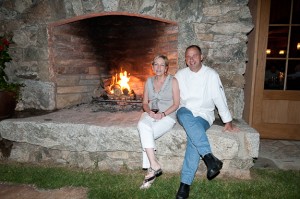
I hope that you will get a chance to come to this part of the country and that you will make plans to dine at Canyon Kitchen when you do. Chef Fleer’s cuisine truly is exceptional (and he is an awfully nice guy, too!). This restaurant is one of the highlights here in the mountains. There is nothing better than spending a Summer evening dining in the Jennings Barn at Canyon Kitchen with all the doors open surrounded by views of the box canyon. There is a certain glow that radiates from this restaurant when the sun sets in the evenings and the lights are turned down low. It is a very special place.
Chef Fleer shared his fabulous recipe for Buttermilk Panna Cotta with Strawberry-Champagne Soup with me so that I could share it with you. I just prepared it over the holiday weekend for friends and it truly was one of the best desserts I have ever had!
Enjoy!
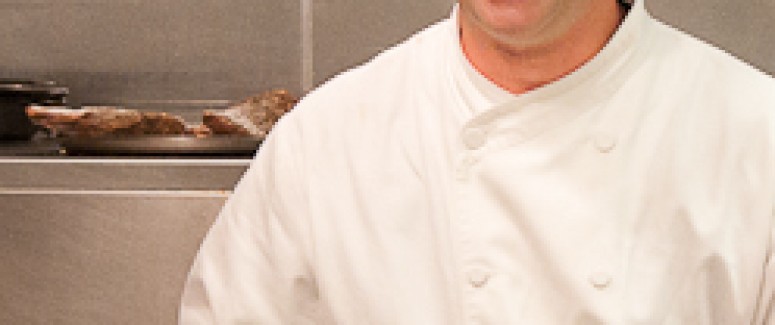
Buttermilk Panna Cotta with Strawberry-Champagne Soup
Courtesy of Chef John Fleer
Serves 12
Ingredients:
Buttermilk Panna Cotta
1 tablespoon (1/4 ounce package) unflavored, granulated gelatin
1/4 cup water
1 1/2 cups half-and-half
3/4 cup sugar
2 each vanilla beans, split, scraped
2 1/4 cups buttermilk (room temperature)
Strawberry-Champagne Soup
(Yield: 1 1/2 quarts; Serves 12 4-ounce portions)
2 pints strawberries, washed, cleaned of stems, and halved
4 ounces water
8 ounces orange juice
1/2 cup sugar
1 cinnamon stick
1/4 teaspoon kosher salt
8 green peppercorns
2 tablespoons honey
1 tablespoon lemon juice
10 ounces Champagne
1 pint strawberries, stems removed, washed, diced brunoise
Directions:
For Panna Cotta:
Bring half-and-half, sugar, and vanilla beans and scrapings to a simmer in a medium heavy-bottomed saucepot. Turn off heat and set aside.
Sprinkle gelatin over room temperature water. Bloom gelatin in water for five minutes. Warm the gelatin over water bath until gelatin is fully dissolved.
Whisk in dissolved gelatin and buttermilk and stir until fully combined.
Strain the mixture through a fine-meshed strainer.
Cool panna cotta mixture over ice, but do not let it set.
Ladle mixture into small ramekins or dishes.
Chill panna cottas for one hour in the refrigerator.
For Strawberry-Champagne Soup:
Bring water, orange juice, sugar, cinnamon stick, salt, honey and green peppercorns to a simmer. Let stand for one hour. Strain mixture through a fine-meshed strainer and pour over the strawberries . Put the strawberries in a blender. Puree until mixture is smooth. Stir in the lemon juice and champagne. Serve chilled.
Assembly:
To remove panna cottas from their dish: dip the bottom of the dish into warm water briefly and turn out onto your dessert bowl or plate. Serve cold.
Pour 4 ounces of the soup slowly to one side of the panna cotta.
Tilt the bowl to allow the soup to move to all areas surrounding the panna cotta.
Garnish with brunoise of fresh strawberries.

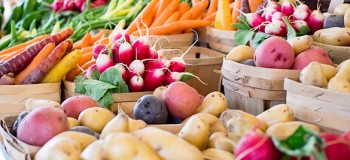
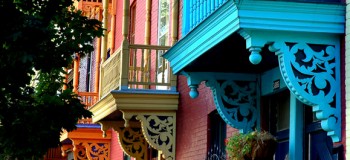
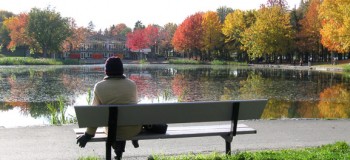


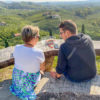
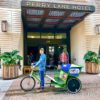
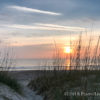
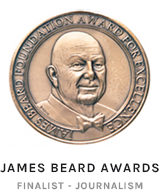

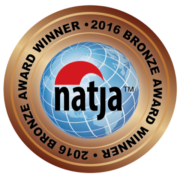





What a great interview…The photos are just wonderful, and the food looks fantastic!
Another great job Gwen – you are so fortunate to have access to great food/chefs! I love that part of the country and look forward to returning again soon – and I will definitely want to eat at this place!
Sounds great and really enjoyed your writing BUT where is this restaurant located and are there easy directions? Thanks so much from another Cullasaja member.
Hi Jean,
It is approximately 3 1/2 miles from the crossroads in Cashiers. You will go past Ingles. It is located in Lonesome Valley on the left hand side of the road. You will definitely need to call for reservations as they are only open for dinner Thursday-Saturday and serve Sunday brunch. 828.743.7696 ext. 222. You may need to call a couple of weeks in advance as it sells out pretty quickly.
I hope you enjoy your experience at Canyon Kitchen as much as we have enjoyed dining there!
Gwen
We were at dinner tonight and Canyon Kitchen came up in conversation. Not having been down that way in a while, I was curious to follow through on it. Then your article came through. Timing!
Der and I are looking forward to giving it a try as well as the Buttermilk Panna Cotta with Strawberry-Champagne Soup.
BTW…photography was great too!
We have six guests coming to Highlands and have been trying to decide where to take them for a memorable dinner. You just answered our question. Thanks so much for such a wonderful article and beautiful pictures.
By the way, we really enjoy your articles about Highlands.
Awesome interview. It is such a lovely setting as well.
I would like step-by-step photos of you preparing Chef John’s Panna Cotta, for your next post, please 😉
Fabulous interview and photos!
Hi Mr. BunkyCooks!
Hi Denise,
Mr. Bunkycooks says hello to you all, too! 🙂
No step-by-step photos on anything these days… I am doing well to get before and after shots!!!
That last shot was pretty cool, huh?? Friends just had a renovation on their deck and I brought dessert. It was a Gourmet moment!
Gwen
great post, love meeting new and talented chefs, I love your pics, they are always so warm…
sweetlife
Wow, what an amazing place and such a talent Chef Fleer is! Love his advice too for those who want to become a chef. His experience is so valuable.
GREAT photographs Gwen!
I was wondering about the Canyon Kitchen…now I know we absolutely must go there!
It looks absolutely charming and reminds me of a lovely canyon restaurant that we had to snow-shoe to just outside of Aspen.
Thanks for sharing, Gwen!
another great interview and he really does sound like a nice guy. love this recipe and so glad he shared it with you and us…
What a great series! I loved getting an intimate view of this restaurant and the brilliant man behind it. It was interesting to hear how he went about coming up with dishes and a menu….I can’t imagine the pressure he must be under to produce quality dishes, season after season. Thank you for sharing!
Hi Monet,
Thank you for your comment! Chef Fleer has had an amazing career and I really was fortunate to be able to have this interview. I met him last year and he has always been incredibly gracious and friendly.
I am glad that you enjoyed this article. I look forward to doing others in this series!
Gwen
I’m enjoying your Chef series. You live in a beautiful part of our country! What a lovely, warm and inviting dining room. Very interesting, the Chef’s methods for planning out dishes by sort of wireframing it visually…I like this technique. Gwen, fantastic photography and the strawberry champagne soup served with the panna cotta sounds wonderful…my first try at panna cotta will be this recipe!
Thank you, Cristina.
I have always admired Chef Fleer and knew of him for many years. I am glad that you found the article interesting. I feel very fortunate to now be able to have dinner at this restaurant in this incredible place that is minutes away. It truly is a very special place to be.
I hope that you will come our way sometime!
Gwen
Another place I’m going to have to try. Someday soon we’ll get a babysitter and my husband and I will just head to the mountains and meander around to all these wonderful establishments. Thank you so much for this.
What an absolute great post! Marvelous food & absolutely stunning pics. I am really enjoying your GREAT AMERICAN CHEFS series, Gwen.
The pannacotta and strawberry cream recipe is lovely and I must give it a go.
Ciao, Devaki @ weavethousandflavors
Hi Devaki,
I am glad that you are enjoying my series with Great American Chefs. I am very fortunate to be able to sit down and chat with chefs that I have known and admired for years. I am having a lot of fun doing this!
This dessert was incredible! The combination of flavors took it to a very sophisticated level. I could have had a bowl of the strawberry-champagne soup without anything else! Yum!
Thank you for your comment!
Gwen
Hi Gwen,
I enjoyed reading your interview with Chef John Fleer and the photographs of the restaurant, what a beautiful place to get away for a spectacular meal. The recipe for the buttermilk panna cotta with the strawberry champagne soup sounds and looks incredible, thanks for sharing such a unique corner of our world!
Wonderful post and interview! I’m so close–only a little over an hour! Better pack my bags!
Hi Gwen,
You do live in a beautiful part of the country. I should visit someday and enjoy some of Chef Fleer’s creations. That was an interesting post. Love the pictures too.
Biren
Lovely photos and great interview. I love names like “little hell” that conjure up such vivid mental images.. I think the English language is lacking in such things!
I’m really impressed with your work. You have found a niche that is interesting, informative and enjoyable for the reader. I know how much time and effort goes in to these articles and I believe it will lead to something very special.
Great series! And strawberry champagne soup? SWOON
What an absolutely BEAUTIFUL place to work! I love the kitchen garden with those gorgeous lettuces. 🙂 Wonderful article. 🙂
Thanks a lot !!! This is VERY interesting !!!! I love interviews to chefs. We learn so much !!
I agree with Chef Fleer…Francis Mallmann is a great chef, and I am not saying this because he is Argentinian…He has a TV program, where he goes with his Land rover (and his dog Luna) to the most remote, desserted places in Argentina (with incredible landscapes) and there, out of his truck, he takes out a few things, and with natural fire, he prepares the most delicious dishes you can imagine…..
Thank you for your comment, Cristina!
I just received Seven Fires in the mail and cannot wait to read more about Francis Mallmann and see his recipes. That show sounds fascinating. I will have to see if there is a chance to watch it in the states!
Gwen
Very interesting. We got acquainted with Blackberry Farm at the Aspen Food and Wine Classic this year and were so impressed. Thanks for sharing.
john fleer is one of the best, most innovative chefs in America. I have had the pleasure of interviewing him and he is a delightful, wonderful person as well. Congratulations on your nomination as semifinalist for the 2011 James Beard Awards! I would love to interview you again in your new kitchen. lavender love, sonia (The Purple Lady)
Hi Gwen,
My name is Jane and I’m with Dwellable.
I was looking for blogs about Cashiers to share on our site and I came across your post…If you’re open to it, shoot me an email at jane(at)dwellable(dot)com.
Hope to hear from you soon!
Jane
Love the atmosphere beautiful, unfortunately cannot say the meal was worth it
the scallop was very good so was the salad the meat very hard to cut , took 1 of the 2 pieces at home hoping that 2nd piece would be tender the dog enjoyed it.
The deserts were very plebiane
I come back every year love the place but same disappointment.
Hope it will be better next year